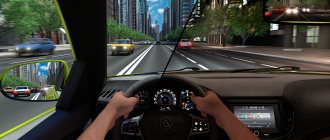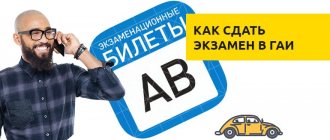Who is a road user?
This is an individual involved in the events taking place on the track.
Driver
He is given the greatest responsibility and a list of requirements to be fulfilled. The driver of the vehicle is the main participant in the movement. The professional skill of the driver and his skills play a key role in the safety of road traffic.
There are different categories:
- Vehicle driver. This role is given special attention, since most of the points in laws and traffic regulations are related to driving (for example, “General duties of the driver”). However, there are slight inaccuracies in the definition of the term. If a person gets out of the vehicle when a traffic police officer stops a car, he will cease to be a driver.
- Animal driver. The herd crossing the road is also a participant in the DD. Therefore, when moving across the highway, the animals must be accompanied by a shepherd.
- Instructor. He bears full responsibility for the actions of the student behind the wheel.
Passenger
Many vehicles are designed to transport people. This means that passengers are participants in the DD. These are persons, with the exception of drivers, who are in the vehicle.
It is a mistake to think that they are not affected by traffic regulations. Since these are also participants in the movement, if the rules are not followed, a person may be held accountable.
A pedestrian
This is a person who is on or near the road and is not doing any work. Pedestrians are the most problematic category of DD participants due to the formation of the incorrect attitude that they are always right. A third of accidents happen due to their fault.
1.4. General provisions. Road users. Adjuster
June 2, 2015 Administrator Home page » Traffic rules course Views:
Traffic rules would be “dead” if they were not applied in traffic practice. Laws must work; This is the only way they justify their existence. In other words, road users give life to the Rules.
ROAD TRAFFIC USERS
“Road participant” is a person directly involved in the traffic process as a driver, pedestrian, or passenger of a vehicle.
I don’t want to comment on this concept. Everything is clear without further ado: Only three types of road users know the rules:
- Driver of the vehicle;
- Passenger of the vehicle;
- A pedestrian.
Let's better think about who is WHO?
DRIVER
If you think that traffic rules are written primarily for drivers and the vehicles they drive, you will not be far from the truth. The driver is the most important participant in traffic.
And, accordingly, the overwhelming majority of the Rules (including signs and markings) regulate the actions of the driver.
“Driver” is a person driving a vehicle, a driver leading pack animals, riding animals or a herd along the road. A driving instructor is treated like a driver.
The definition itself reflects three aspects of the driver.
Firstly, the driver is the person who directly controls the vehicle.
Consequently, it is the driver who is responsible for the safety of his vehicle and the passengers in it. It is the driver who is obliged to follow the requirements of the traffic rules and, especially, bear the responsibilities provided for in section 2 of the Rules (“Duties of the driver”).
By the way, one note. The driver does not have to be in his vehicle. So, for example, by putting his car into stop and park mode and leaving it, the driver does not cease to bear the responsibilities of a driver.
The second manifestation of the driving essence is the driver who drives a herd along the road or leads pack and riding animals. Here the variety of drivers is manifested solely by imagination - a shepherd, a shepherd, a caravan driver, a swineherd, etc.
The third driver is an instructor who teaches driving while the student is behind the wheel.
Thus, the driver, according to the traffic rules, is the main participant in the road traffic. And safety on the road largely depends on his behavior.
A PEDESTRIAN
“Pedestrian” is a person who is outside a vehicle on the road or on a pedestrian or bicycle path and is not working on them. Pedestrians include persons moving in wheelchairs without a motor, driving a bicycle, moped, motorcycle, carrying a sled, cart, baby stroller or wheelchair, as well as using roller skates, scooters and other similar means for movement.
Let's try to figure it out.
The first criterion for a pedestrian is that he is on the road or adjacent territory (which, as you know, is not a road, but on which the Traffic Rules apply).
It is a mistake to believe that pedestrians are only those persons who cross the roadway at a pedestrian crossing. Let's remember that the concept of road also includes sidewalks.
Therefore, persons walking on sidewalks will also be considered pedestrians.
But if you are sitting at home in front of your computer monitor, then you are not a pedestrian, because you are not currently on the road.
The second criterion for a pedestrian is that he is outside the vehicle. People standing at a bus stop waiting for a bus are still pedestrians.
The third criterion is the absence of affiliation with the persons performing work on the road (construction, repair, etc.). Road maintenance workers, for example, are not pedestrians.
In addition, the persons listed in the second part of the concept will be considered pedestrians. For example, a motorcycle driver, dismounting and pushing the vehicle in front of him, turns into a pedestrian.
To put it simply, a pedestrian is a person who is on the road, but outside the vehicle. By the way, a driver who leaves his car in stop and park mode is both a driver and a pedestrian.
PASSENGER
“Passenger” is a person, other than the driver, who is in (on) a vehicle, as well as a person who enters (gets on) the vehicle or exits (gets off) the vehicle.
In principle, everything is clear. A person in a vehicle who is not the driver is a passenger.
But a passenger is a philosophical category. When a person enters a vehicle, he or she changes from a pedestrian to a passenger. In other words, a person’s leg raised to board a vehicle positions him as a passenger.
And at the moment when a person gets out of the vehicle, he turns from a passenger into a pedestrian. That is, a foot stepping on the ground will change the status of the passenger, turning him into a pedestrian. The responsibilities of these road users change accordingly.
ADJUSTER
“Traffic controller” is a person vested with the authority to regulate traffic using the signals established by the Rules in accordance with the established procedure, and who directly carries out the said regulation. The traffic controller must be in uniform and (or) have a distinctive sign and equipment. Traffic controllers include police officers and military automobile inspectors, as well as employees of road maintenance services, those on duty at railway crossings and ferry crossings when performing their official duties.
Let's make a reservation right away: the traffic controller is not a participant in traffic. This is the person who has the right to regulate traffic.
Drivers are obliged to follow the instructions of the traffic controller and strictly follow them - follow the indicated directions, refrain from continuing to drive or perform a maneuver, etc.
Most often, traffic controllers are represented by traffic police officers.
However, these functions can be performed by:
1) employees of the military automobile inspection (VAI);
2) workers of road maintenance services during road works;
3) those on duty at railway crossings when driving on the corresponding sections of the road;
4) duty officers at ferry crossings.
Each traffic controller is required to have a uniform that reflects his status, as well as means of traffic control (a striped rod, a disk with a red reflective element, a red lantern or flag). Traffic police officers also have a special distinctive sign on their chest (in the form of a badge).
The driver must remember that in relation to the traffic controller he is obliged to adhere to two basic principles of behavior:
- Follow the instructions of all regulators;
- Provide documents and your car for inspection only to police officers.
Summarize. According to traffic regulations, the driver, passenger and pedestrian are three road users. But the regulator is not a participant. He is the person empowered to regulate traffic.
If this information was useful to you, please write about it in the comments. If you have any questions, write, we will definitely try to help you.
Traffic regulations online from the autoass team!
The content of the article:
- road users
- who is a road user
- a road user is
- road user
Tags: driver, passenger, pedestrian, traffic controller, road user
What rights do persons involved in road traffic have?
Drivers, passengers and pedestrians can legally receive:
- Compensation for losses due to non-compliance with standards of road facilities and the road itself.
- Free emergency assistance in case of road accidents from healthcare workers.
- Correct information about the quality of services and facilities related to safety on the highway.
Drivers, pedestrians and passengers must study traffic rules. They can also file a complaint to be reviewed for misconduct by officials directly related to traffic on the highway.
Moving groups
The behavior of road users should not create emergency situations on the roadway. In this regard, groups can move along the right side of the route in columns. Each of them should have no more than 4 people in 1 row. Accompanying persons should move on the left side in front and behind the column. In the daytime they follow with red flags, in conditions of poor visibility or in the dark - with burning lights (white in front, red in the back). Children's groups can only move when accompanied by adults and exclusively on pedestrian paths and sidewalks. In the absence of such areas, movement along the roadsides is allowed, but during the daytime. These are the main responsibilities of road users outside the vehicle.
Safety rules and culture of road users
Most drivers and pedestrians avoid difficult situations on the highway. Everyone must clearly understand and realize that the highway is a high-risk area. Not only their lives, but also those around them depend on the behavior of road users.
Some rules of safety and culture of traffic police, which are considered the basis of interaction between drivers:
- To express your gratitude to another, you need to blink your headlights.
- If a person sees a danger in front of him that is hidden for those driving behind, it is recommended to turn on the hazard lights and press the brake pedal several times.
- When another motorist does not close the trunk or door properly, you need to honk at him and point your hand at an element of the car.
- If at night the headlights of an oncoming vehicle are blinding, you need to switch from low beam to high beam.
You should always focus on the car driver’s turn signal if the driver is a cyclist or pedestrian. The latter must also follow all the rules, for example:
- Movement occurs on the sidewalk or along paths. If there are none, then move in 1 row along the side of the road or the edge of the roadway.
- For conflict-free participation in traffic accidents, a pedestrian must walk in specially designated places, and towards vehicles.
- You cannot jump onto the roadway and run across it.
If a person is a passenger, do not forget the following rules:
- Wait for the vehicle in specially designated areas.
- Board the vehicle after the vehicle has come to a complete stop.
- Do not lean on the door under any circumstances, as it may open at any moment.
These rules will help instill the skills of safe participation in road traffic among those involved in it.
Driver
The term driver, according to traffic rules, takes on a broader meaning than just a person driving a vehicle.
With your permission, I will consider this term in more detail, and will focus on the phrase “a person driving a vehicle.”
To thoroughly understand who the driver is, it is necessary to quote another term from Chapter 1 of the rules.
It turns out that a person driving a motorcycle, moped and bicycle is also a driver.
The driver is also the driver driving the herd (shepherd, shepherd, etc.). And what’s most interesting is that a driving school instructor is equivalent to a driver, since he also has vehicle controls (brake and clutch pedals) and can intervene in the process of driving at any time. A paradoxical situation arises - there are two drivers in a training car: a student and an instructor.
We can say that the driver is the main participant in the movement, since he controls the vehicle, so if you look at the responsibilities of the participants in the movement, he has much more of them than the rest.
Crossing the roadway
You need to remember that:
- You can't cross the road everywhere. It is necessary to find special places for this, for example, a zebra crossing, underground or overground passages.
- In places where there is a traffic controller, you must wait for the permission signal to cross the highway.
- It’s worth first seeing if there are cars and how far away they are before you start driving.
- Choose places from which you are crossing so that other traffic participants see the person and are ready to slow down if necessary.
What can you count on in the roadway area?
While on the track, you need to be prepared for any development of events. For example:
- There are often traffic workers on the highway, which will require you to avoid obstacles.
- A person or animal may suddenly jump out, and you need to be prepared to take safety measures.
- When in a residential area, you should be especially careful. If the person is a driver, then reduce the speed. A pedestrian must take into account that the driver will not always have time to react to the sudden appearance of people on the road.








